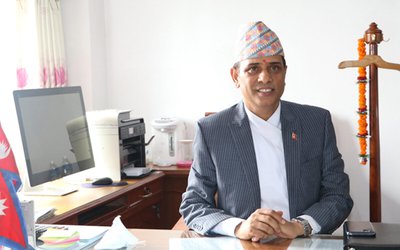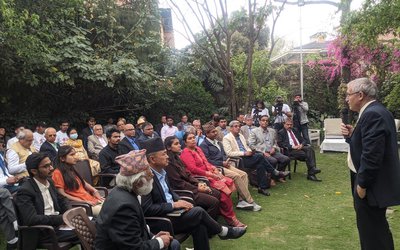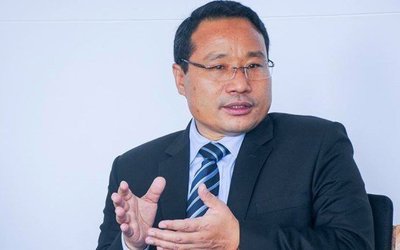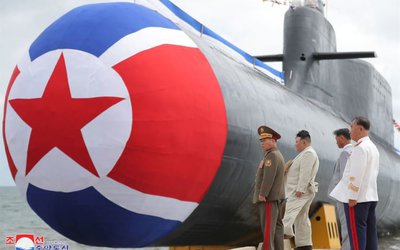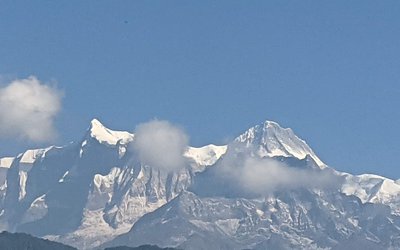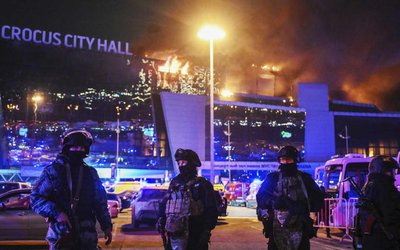
With the publication of the SLC results, higher secondary schools have announced opening of enrolment for the students, giving them lots of options and opportunities for further studies. Run with private investment, some of these schools and colleges are using all methods and manners to lure the students. At a time when the government-funded public schools and colleges are in a state of disarray in terms of providing quality education, students have the compulsion to seek admission in the private schools
All around the year, a section of the people, representing different walks of life and organized groups, criticize the private schools and colleges, accusing them of commercializing the education sector and creating many other ills in the society. However, they rarely criticize the performance of the fully funded government schools even though they fail to provide quality education to the people.
Those who oppose private investment in education don't have any option or better alternative to offer for the parents and children who are considering enrolment for further studies after school. Because of the huge gap of investment and low quality and performance of government supported schools and colleges, parents and students naturally get lured to private colleges.
As the demand is growing, private investment is flourishing in the education sector. This is what one can see in the advertisement flowing through the country's media outlets.
Although privately managed schools are more expensive than the government's wholly funded public schools, the students and parents have only a little choice other than to send their children in private schools for quality education.
As higher secondary education affects everybody's life in society, fees of private education institution are a matter of debate.Whether they be political party affiliated student unions or guardian associations or some former teachers and so called experts, they are usually a part of a common front against the private schools.
Like in the previous years, this year too saw the debate on the plus-two education beginning from the money charged for admission forms and as entrance fees. Even the Supreme Court issued directives to the government for fixing the rate of entrance exam fees and admission forms.
"No one can underestimate the contribution of private schools to the overall educational development of Nepal. In terms of students’ performance in the School Leaving Certificate (SLC) exams and employment opportunity, private schools’ contribution is worth-noting. But this does not mean they can do whatever they like and are above the laws of the land. Some educationists in Nepal seem to suggest agreed regulatory framework for private schools," writes Chandra Sharma Poudyal in his recent article in Setopati Online.
When debates revolve around insignificant events, the broader issues of quality and competitive education system go unheard. As higher secondary colleges are dominated by private investment, it helps the government to channel money to primary education. This also makes the education a bit expensive for parents.
Who Needs Schools
This year 47.43 percentages of students passed the SLC examination. According to the results published by SLC board, out of 405,338 students, 192,267 students have passed this year’s examinations.
Amongst the ones who have passed the exams this year, 21,247 have secured distinction while 90,176 have passed in the first division. Likewise, among the 145,183 students in the exempted category, 13.80 percent i.e. 18,778 passed.
All they need now is the colleges for their further studies. The difficulty is for the students and parents to choose the college and subject combinations. Many good colleges like Global College of Management, GEMS Higher Secondary School, Little Angeles, and VS Niketan have already closed their admissions following an overwhelming influx of applicants.
As all other colleges, Global College International has also announced new admission for GCE A level. Similarly, there is a rush of students in St. Xavier College, St. Xavier School and St. Mary's. Nepal Army's Higher Secondary School and Nepal Police Higher Secondary Schools don't have to worry about getting students either.
Similarly, the old and reputed schools like Brihaspati Vidya Sadan and Bhanubhakta Memorial do not advertise, they too get adequate number of students for their higher secondary level. Similarly, New Millennium College has also drawn students to its capacity. Although these schools do spend a little in promotion, they are the choice of bright and diligent students.
Technical Education
Although annually a large number of Nepalese are joining the higher education, the number of students in the technical education is yet to rise. Nepal meets the MDG Goals in the enrolment at the primary level. However, Nepal is lagging behind in increasing the enrolment of students at the technical level.
As Nepal is spending more money on infrastructure development, more qualified and competitive engineers and technical manpower will be needed for the country. As the government cannot produce the necessary human resources alone, there is a need to increase more private investment in the technical education.
For instance, the current level of Nepal's technical education is not enough. Even the quality of Nepal's engineering students is yet to meet the international standards. To change the situation, there is the need to encourage students to enroll in the areas where they can later go for technical education.
Colleges for Various Kinds
Although the schools are available in various ranges, only those schools which retain their performance and competiveness survive and get adequate students. The old and branded schools spend less money for advertisement whereas some newly opened schools spend a lot of money for advertisement. However, in a competitive environment, no public school has come to stand with the private sector for quality education.
As SLC level students start thinking they are grown up and ready to take any decision in their life, there are also chances for them to enroll in wrong places. One of the toughest jobs in the present environment for the student is choosing subjects and their combination alongside the academic environment. Proper guidance and supervision are needed here.
As Nepal lies in the active seismic zone, students also need to focus on other facilities like elevators, trendy cafeterias, comfortable classrooms, hygienic areas, safe and strong college structures built in view of saving lives in natural calamities like earthquakes.
Although many schools claim that they have well managed libraries, computer labs, science labs, lecturers and teachers, most of the colleges spend less money on them.
Similarly, recreation activities such as sports, music, dance and so on are necessary and a student can be more creative under such environment and can be more innovative. As providing these facilities depends on financial capabilities of schools, the students need to pay additional amount for such facilities.
Given the present circumstances, although the government colleges are cheaper than the private ones, guardians and students prefer the latter.
Future of Higher Education
Given Nepal's current fiscal constraints, it is impossible for the government to bear all the cost of higher education. Thus, there is the need to encourage private investment in the education sector.
However, a good private investor does not want to get involved in the education sector because it is uncertain and there may be too much intervention from the government and other sectors. It is here a sound policy and strong regulatory authority are needed to guide the private schools. Foremost in importance will be to delink education from politics. Only then, we will get to see drastic changes in terms of quality.
As long as the government and policy makers do not look at the private sector as a partner, there is little possibility of increased private investment in education on a broader level. For this, there is the need to create a conducive environment for the investment as well as a strong regulatory mechanism to control the quality. More private investment will be the game changer in education sector, which was started in 1993 under the leadership of then Minister of Education Govinda Raj Joshi.
The policy prepared by then Nepali Congress government has made a great stride in the country encouraging the private sector to join in offering various level of education. The time has come now to make higher education sector more productive and competitive. This requires a new approach.
- TANAHU HYDROPOWER PROEJCT: A Significant Achievement
- Apr 15, 2024
- AMBASSADOR HANAN GODAR: Sharing Pain With A Nepali Family
- Mar 30, 2024
- VISIT OF KfW AND EIB TO NEPAL : Mission Matters
- Mar 25, 2024
- NEPAL BRITAIN SOCIETY: Pratima Pande's Leadership
- Mar 24, 2024
- NEPAL ARMY DAY: Time To Recall Glory
- Mar 15, 2024


